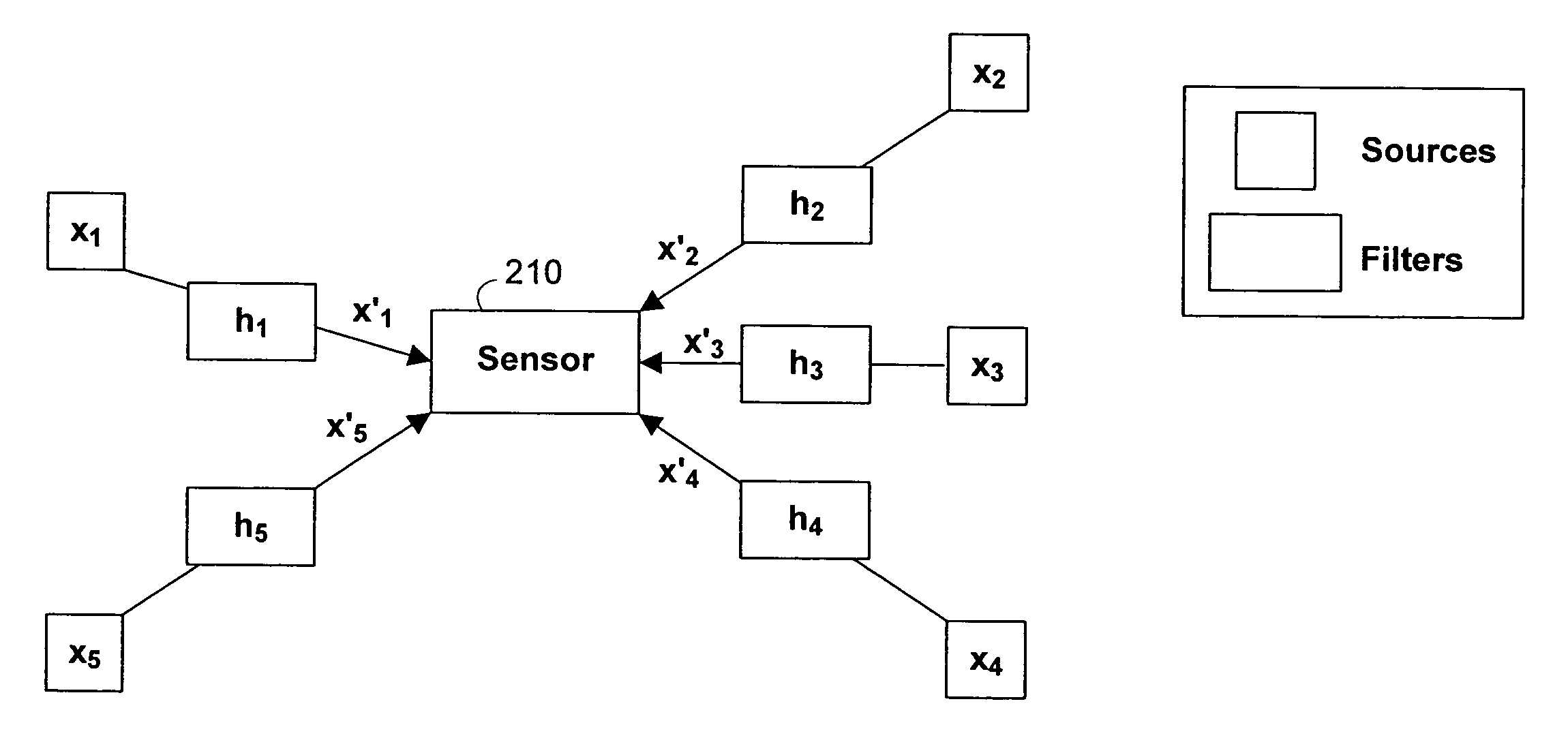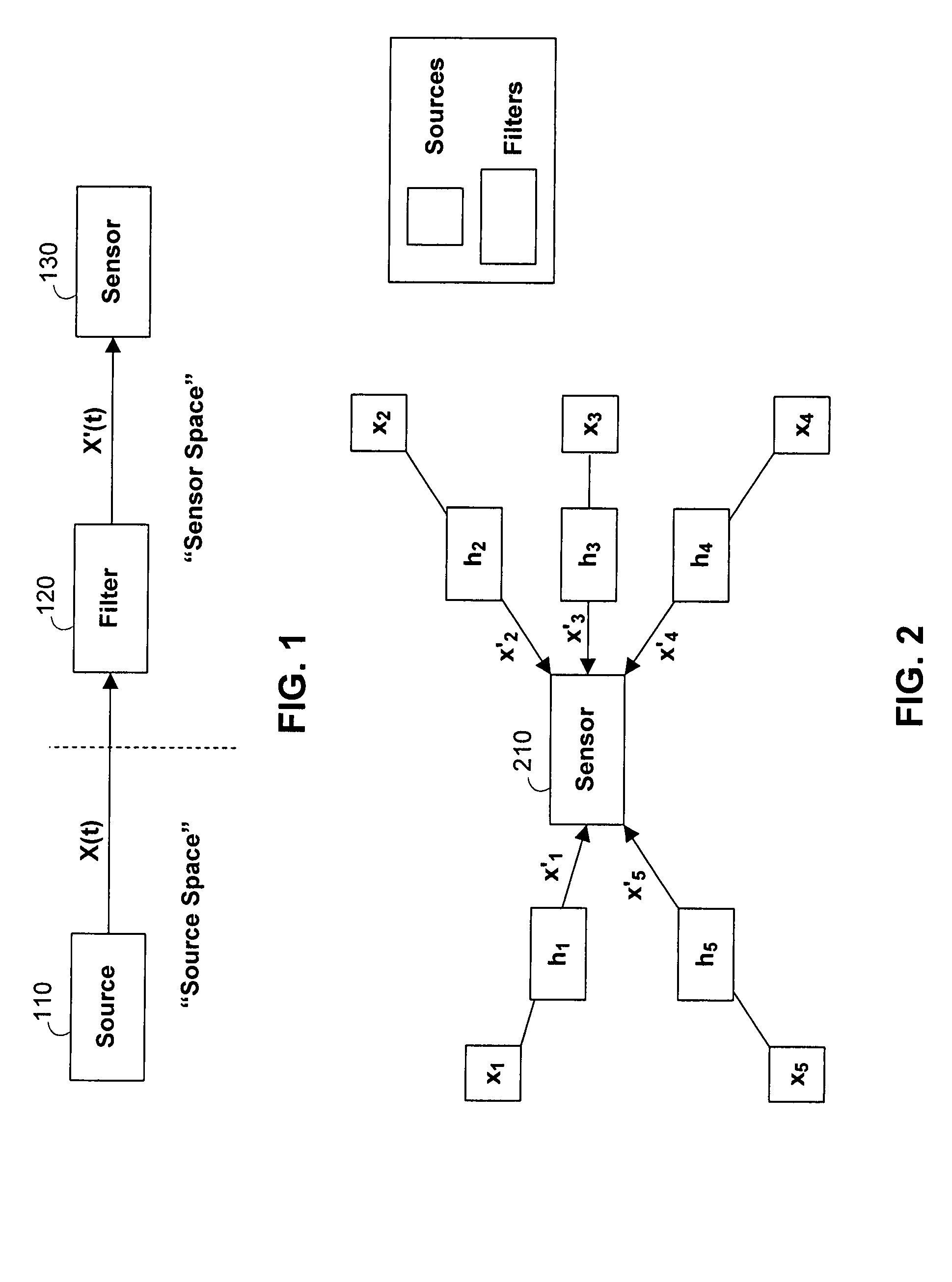Systems and methods for separating multiple sources using directional filtering
a filtering system and filtering technology, applied in the direction of electrical transducers, instruments with desired directivity, sets, etc., can solve the problems of limited success, more difficult for users to hear, and restricted operating conditions
- Summary
- Abstract
- Description
- Claims
- Application Information
AI Technical Summary
Benefits of technology
Problems solved by technology
Method used
Image
Examples
Embodiment Construction
[0022]In accordance with the present invention, systems and methods are provided to separate multiple sources using cues derived from filtering imposed by the head and pinnae on sources located at different positions in space. The present invention operates on the assumption that each source occupies a particular location in space, and that because each source occupies a particular location, each source exhibits properties or characteristics indicative of its position. These properties are used as cues in enabling the invention to separate sources.
[0023]Referring to FIG. 1, source 110 emits a signal, represented here as x(t). Sensor 130 typically does not receive x(t) exactly as it is emitted by source 110, but receives a filtered version of x(t), x′(t). That is, x(t) typically undergoes a transformation, as indicated by filter 120, as it travels from the source to the sensor, resulting in x′(t). Several factors may contribute to the transformation or filtering of x(t). For example,...
PUM
 Login to View More
Login to View More Abstract
Description
Claims
Application Information
 Login to View More
Login to View More - R&D
- Intellectual Property
- Life Sciences
- Materials
- Tech Scout
- Unparalleled Data Quality
- Higher Quality Content
- 60% Fewer Hallucinations
Browse by: Latest US Patents, China's latest patents, Technical Efficacy Thesaurus, Application Domain, Technology Topic, Popular Technical Reports.
© 2025 PatSnap. All rights reserved.Legal|Privacy policy|Modern Slavery Act Transparency Statement|Sitemap|About US| Contact US: help@patsnap.com



